Hello friends,
It’s been a minute since the last Illustrators ABC post, but we’re back with a fun one. In the previous post I told you that I’m on a journey this year to become more confident at drawing from observation and to focus on having fun with the process. Experimenting with mark-making is not only fun to do, it is also a great way to get to know your materials and for discovering interesting textures. You might find that a bit of ink and a dry brush are an excellent way to create fur, or that drawing with a stick gives you just the right amount of looseness that you’re looking for. Playing around with mark-making will result in a visual library of lovely textures that you can then apply in your drawings and illustrations.
“Once you’ve mastered mark-making you are on your way to be able to use it to describe what you see.”
Drawing, seeing and observation by Ian Simpson
What is mark-making?
Marking-making is the way you apply the material, like a pen, pencil or brush, to the page. It’s about how you hold your material and your intention behind it. For example, your marks can be bold and assertive or small and tentative. They can be neat or messy, delicate or rough. Your marks can be very expressive, or you can keep them can be contained. Intention brings feeling into the mix. What do you want to express with your marks, or alternatively, what do you want your marks to convey? There can be playful marks, or uptight ones, aggressive marks, dreamy ones. Experimenting with mark-making is a great way to get to know and expand the visual library you’re building when drawing from observation.
“The way you hold your pen, or move your arm, can produce involuntary and characteristic drawing marks which are identifiable as an artist’s handwriting and like handwriting, they give insight into the artist’s personality.”
Drawing, seeing and observation by Ian Simpson
Mark-Making exercise
For this exercise I sorted my materials in three different categories, wet, dry and hybrid, using only black so I could focus purely on the marks and not get distracted by colour. The goal is to create as many different marks as possible, using one material.
If you want to do this exercise with me, I’ve listed the materials I used below but you can also use your favourite material or pick something that you’re not as familiar with.
A wet material like an ink or paint and the following tools*:
A brush
A nib
A stick
*If you really want to go wild you can also use household objects like an old toothbrush, a sponge or a piece of string, or natural objects like a feather, a leaf, or a flower. You can also use your fingers to smudge the material.
A dry material like:
Soft pastel
Coloured Pencil
Pan pastel tools + electric eraser
Neo Color I (the wax ones)
Oil pastel
A toothpick for scratching things away
A hybrid material that you can use wet and dry like
Neocolor II (water-soluble)
Derwent inktense block
Water soluble Pencil
A toothpick for scratching things away
A list of prompts to get going:
Quick - Slow
Controlled - Chance (you can hold your pencil at the end for less control)
Wet - Dry
Delicate - Rough
Big - Small
Tentative - Decisive
Playful - uptight
Neat - Messy
Expressive - contained
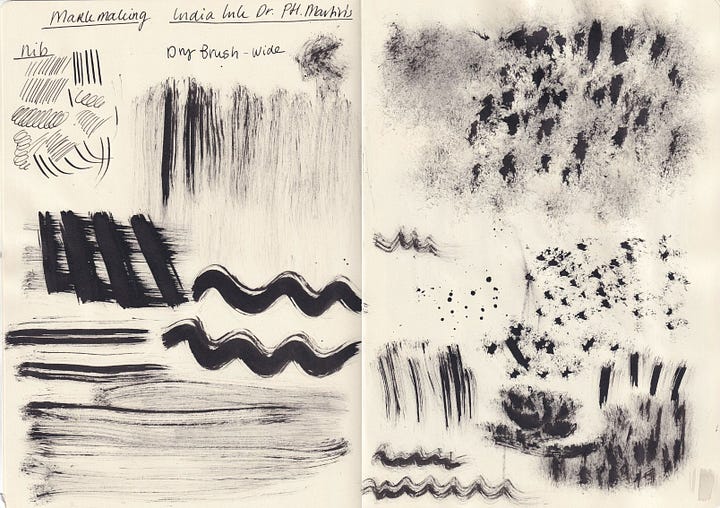
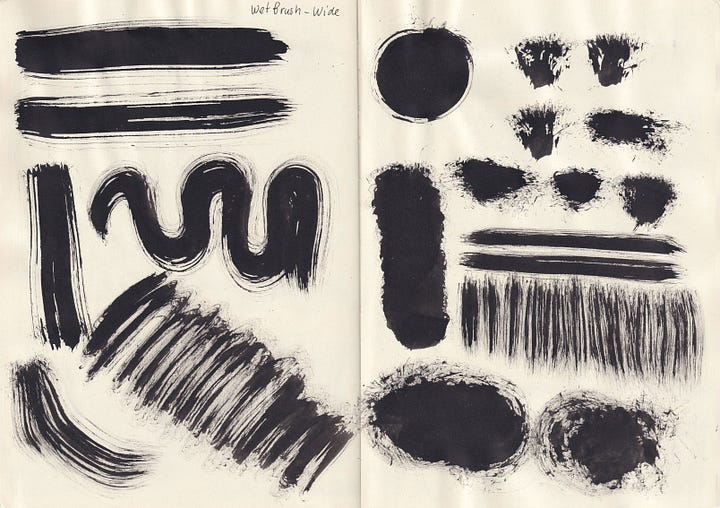
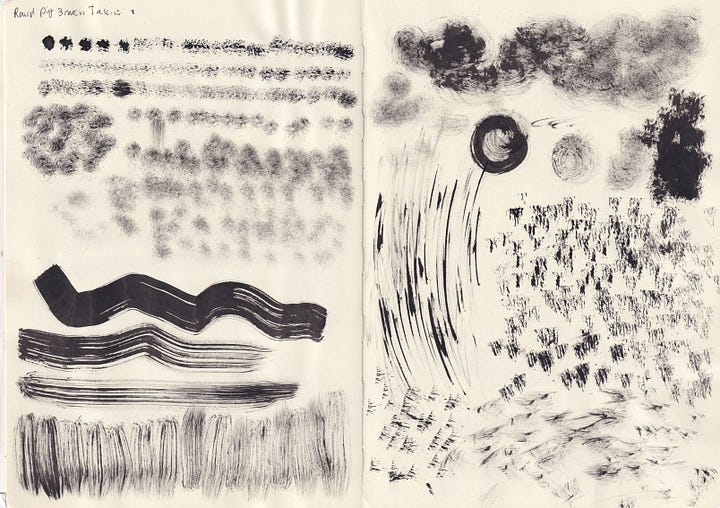
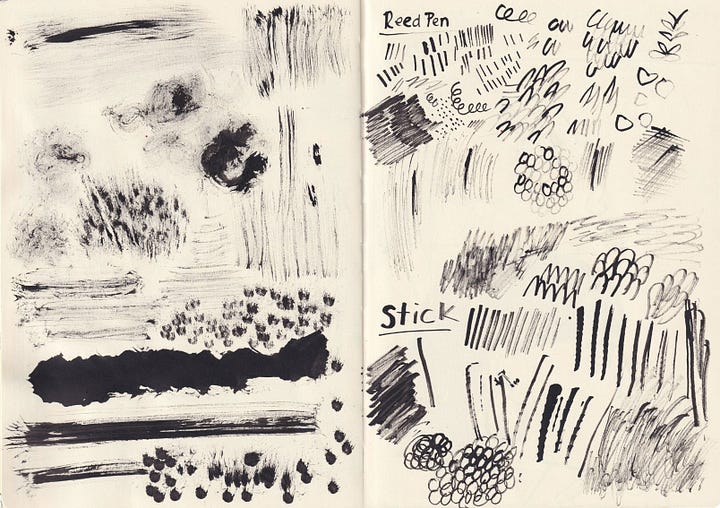
In the images above I used ink with a dry brush, one wide and flat and one round, a stick, a dip pen and a reed pen. I do love a dry brush. I love the fuzzy, fur-like texture it creates, or, when you use a bit more ink, how it looks like bark on a tree. I was pleasantly surprised by the round brush and all the textures I could make with it. As Ian Simpson says in Drawing, seeing and observation, try to see what possibilities your marks could have. I will be scanning in some of them to use digitally in ProCreate. Alternatively, if you do this exercise on loose sheets of paper you can use them for collage.
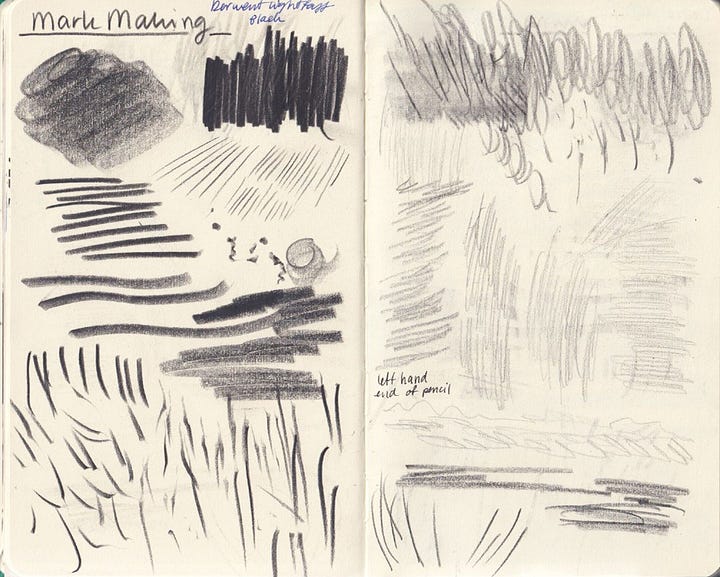
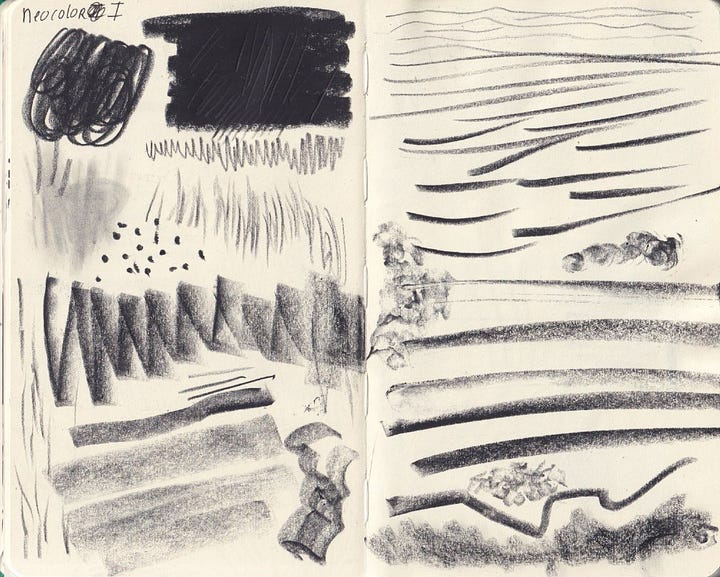
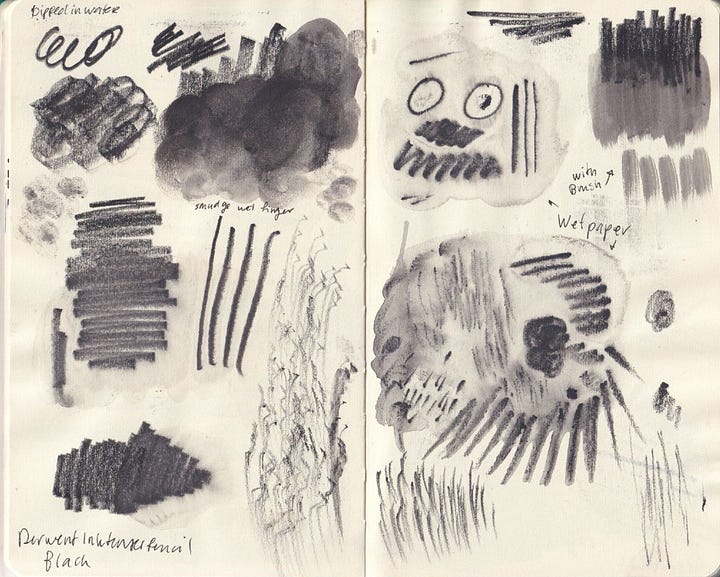
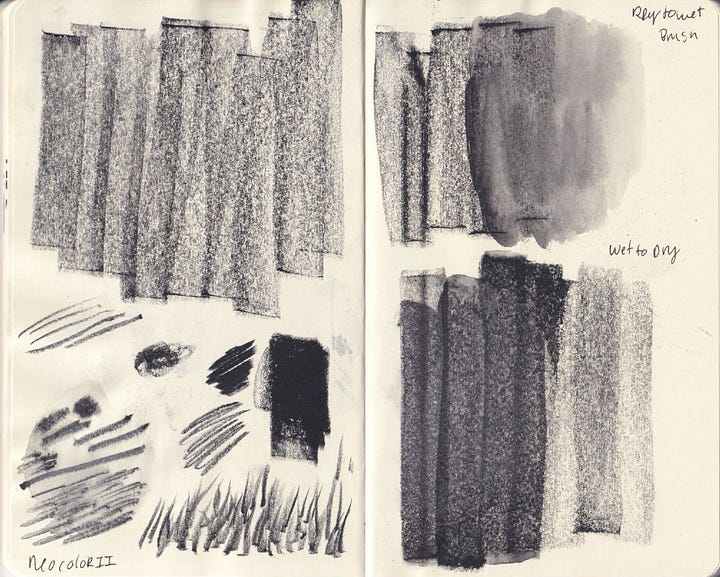
One of my favourite discoveries from this exercise was using a Derwent Inktense pencil on a wet page or after dipping it in water. I love how the quality of the line changes and how the marks bleed and I’m excited to try it with the other colours that I have.
Mark-making and texture in illustration & printmaking
Here are some of my favourite artists and how they use mark-making in their work.
Sarah Young
Ever since discovering this minotaur by Sarah Young in a printmaking book I have been a big fan of her work. Look at all those gorgeous marks and textures! Printmaking is a big part of my practice and I love seeing other how other artists use printmaking in their illustrations.
Brian Wildsmith
The combination of wet and dry marks in the hyena from Brian Wildsmith’s Jungle Party give the illustration an almost dreamy and ethereal effect, while the scratchy marks of the animals on the illustration with the stoat from The Owl and the Woodpecker add to the energy and speed of the chase.
JooHee Yoon
I always try to keep the work of JooHee Yoon in mind when I’m struggling with drawing from observation. Her work reminds me it’s okay to scale it down back to basics and just use a single black pencil. There’s loads of complexity and variety to be found using just one material. Yoon’s drawings are expressive and joyful and absolutely hers.
Next time I will be diving into the Dutch illustration scene and talk about the glorious work of Marit Tornqvist. Thanks for being here and see you in the next one.
Maris
Links:
JooHee Yoon
More about Mark-Making










